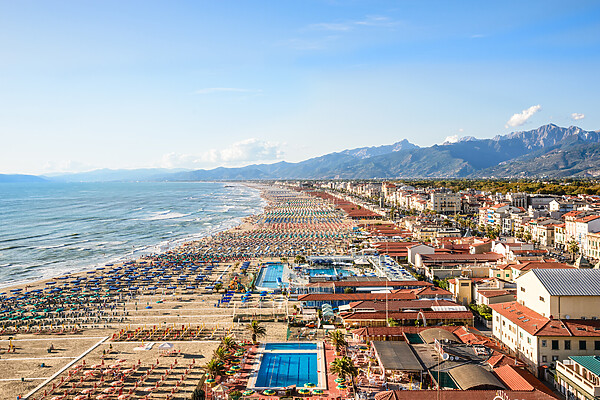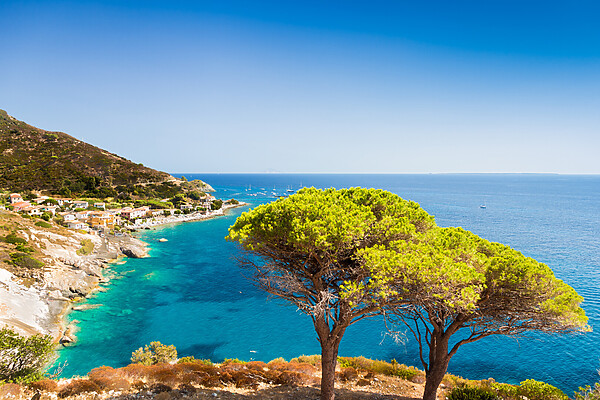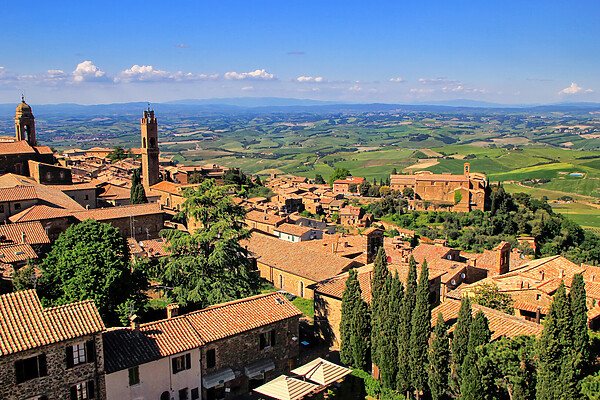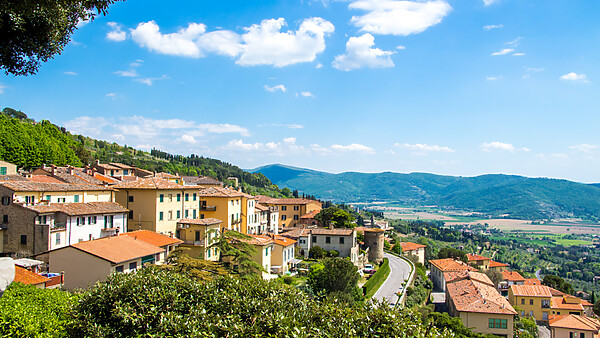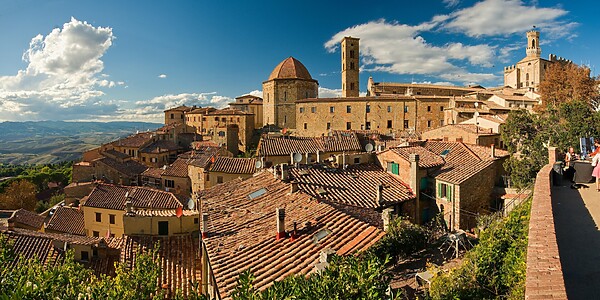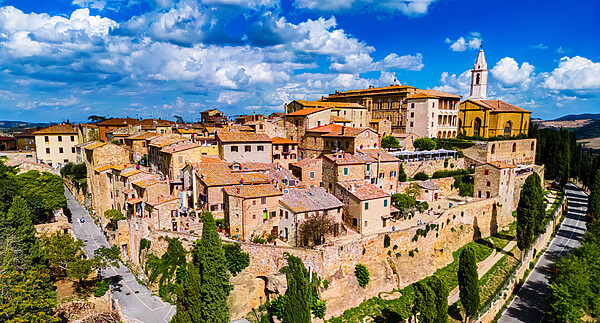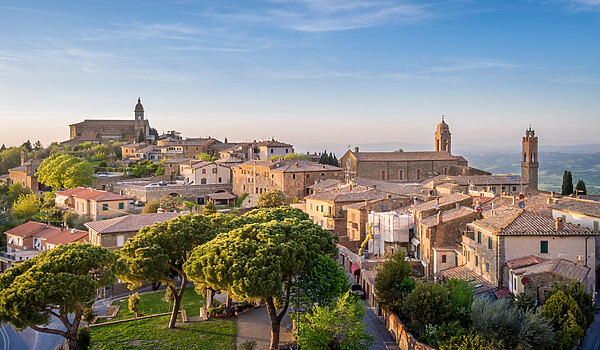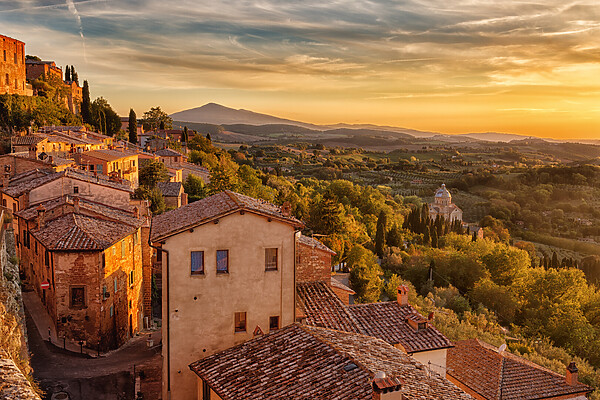Planning a dream wine tour in Chianti, Italy, is an exciting adventure filled with picturesque landscapes, rich history, and, of course, world-renowned Chianti wine tours. Nestled in the heart of Tuscany, Chianti offers an array of experiences for both seasoned wine enthusiasts and curious travelers.
Whether you’re drawn by the allure of historic vineyards, the charm of medieval villages, or the promise of exquisite tasting sessions, this guide will help you navigate the best spots and essential tips for an unforgettable journey. Get ready to sip, savor, and explore the enchanting world of Chianti wines.
Chianti Italy Map
Winalist’s local italian team has put together the perfect Chianti wine region guide to help you discover what to do there and why you should visit this Tuscany wine region.
About the Chianti Region and Chianti wine
Chianti, nestled between the cities of Florence and Siena, is a region that epitomizes the beauty and charm of Tuscany. Stretching over more than 100 miles from north to south, divided into 8 wine-subregions and counts hundreds wine-growers, Chianti is renowned for its rolling hills, scenic vineyards, and historic estates that produce some of the world’s finest wines.
Why is Chianti a Must-Visit?
The region is most famous for Chianti Classico, a wine that has garnered international acclaim for its quality and flavor that you’ll be able to taste during most of Florence wine tours. Visiting Chianti offers more than just wine tasting; it’s an opportunity to immerse yourself in Italy’s rich cultural heritage. The medieval villages, ancient castles, and stunning landscapes provide a perfect backdrop for a memorable journey.
Moreover, Chianti’s commitment to sustainable viticulture and local traditions makes it a unique destination for those looking to experience authentic Italian wine culture. Whether you are a seasoned wine connoisseur or a curious traveler, Chianti promises an unforgettable adventure filled with delightful discoveries.
The History of Chianti Wines
The history of Chianti wines dates back to the 13th century, making it one of the oldest and most storied wine regions in Italy. Initially, “Chianti” referred to a specific type of wine produced in the Chianti hills, but over time, it has come to represent a broader region in Tuscany. The first official delimitation of the Chianti region was established in 1716 by the Grand Duke of Tuscany, Cosimo III de’ Medici, who recognized the unique quality of the wines produced in this area.
The iconic black rooster (Gallo Nero) symbol, now synonymous with Chianti Classico, originated from historical rivalry and is a mark of authenticity and quality. Throughout the centuries, Chianti wines have evolved, with modern winemakers blending tradition with innovation to produce wines that continue to captivate the palates of wine lovers around the world. This rich history adds depth and context to every sip, making a visit to Chianti an enriching experience.
What is Chianti wine?
First of all, Chianti Italy is a wine region of Tuscany. Chianti wine is therefore wine that is produced in the Chianti region, and that meets the requirements of DOCG regulations to be able to have the Chianti DOCG label.
Secondly, the Chianti region is quite wide, which explains why Chianti wines are so well-known: they are easily produced in large volumes and rather inexpensive – thus their availability in many shops and restaurants around the world. The quality of Chianti wine will vary quite a bit, since the wine production is quite wide, the quality depends on the subregion’s soil and terroir characteristics. However, the best Chianti wines are those who come from the hilly areas of Chianti wine region, which is why the term “colli” or “colline” – meaning “hills” – are specifically mentioned on Chianti wine bottles as a quality guarantee.
Finally, Chianti wine have been long thought of cheap red wines, mostly made out of Tuscany’s most grown grape variety: Sangiovese grape. Today, and this since the 20th century, local winemakers innovated and tried to elevate the quality of this Tuscan wine, and blend several grape varieties, including a white grape variety (Malvasia Bianca). Considered the Italian version of a Bordeaux wine, Italian Chianti is both an “everyday” wine that is easy to drink with daily dishes, and a full-bodied wine with more complexity and superior quality thanks to a longer aging period and more sophisticated vinification methods.
Winalist offers amazing Chianti wine tours with wine tastings and much more through our unique website. With us, you can browse, pick, and book the best wine-related activities in Chianti, Italy and beyond. Learn more by visiting our Chianti Italy vineyards page.
Chianti vs Chianti Classico
Have you ever stopped to ponder the subtle nuances between Chianti wines and Chianti Classico? Well, they do exist! While both labels stem from the same region of Italy, terroir and appellations set them apart. To be exact, Chianti is an overarching wine area composed of multiple subregions; one such place being recognized as ‘Chianti Classico’.
Undeniably, the Chianti Classico is the most renowned subregion of Chianti and has its own esteemed DOCG. As such, a bottle labeled “Chianti Classico” will be much higher in quality than one marked as simply “Chianti” since other areas are allowed to use this label even though their soil may not bring out the same delightful flavors that make Chianti Classico so special. From its very beginnings during the Renaissance period, it has been regarded as both central to and excelling at producing exceptional vintages. With its robust tannins and elevated acidity, Chianti Classico wines exude the greatest ability to age among all other Chianti varieties.
Explore Chianti wine region – 2-days trip itinerary
Deep Tuscan countryside of Chianti is a succession of small villages and large expanses of vines. On the road from Florence heading to Siena, here is an itinerary with 4 stops and a one-night stay in Chianti’s most adorable villages. This short road trip to explore Chianti Italy can be done in more steps and days of course! In any case, Chianti is not short of surprises, and the best way to make the most of your wine trip in Tuscany is to live the moment and expect changes of plans!
1. Day 1: Greve in Chianti

Leaving Florence, you can count about a 50-minute drive on the SS222 road towards Siena or Greve-Siena, to reach the picturesque village of Greve in Chianti. The starting point of your Chianti wine trip, Greve in Chianti is basically the birthplace of Chianti wine back in the Renaissance days. You’ll find great restaurants, a weekly market on Saturday mornings and a Wine Tasting Center. Speaking of wine tasting, you should pay a visit to the Montefiorella Chianti winery right in the village!
2. Taste the best Chianti wines at Ruffino 1877

On the hills just outside Florence, in the municipality of Bagno a Ripoli, among vineyards and olive groves, the Ruffino 1877 wine estate welcomes you to their property for a great Chianti wine tasting experience. You will taste different vintages of Chianti Classico and even olive oil from the winery with typical Italian bread!

One other option can be to visit Le Cinciole winery, located in Panzano in Chianti, in the heart of the Chianti Classico.
3. Next stop: Radda in Chianti
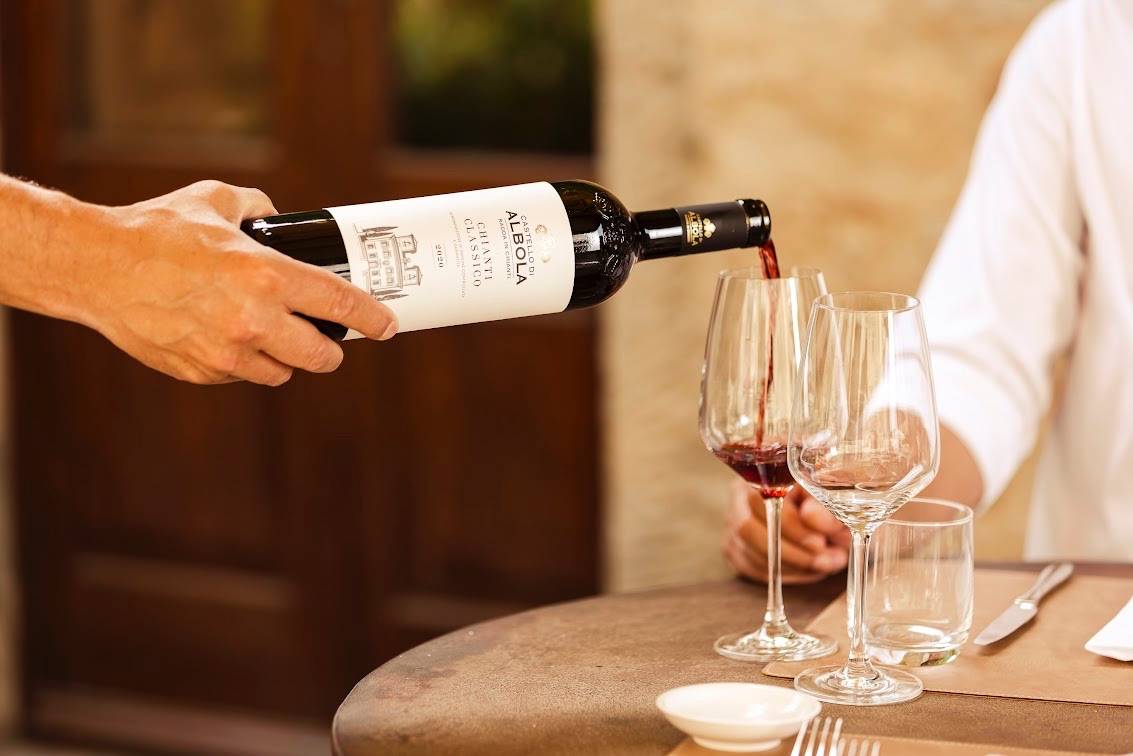
From Greve, you can simply follow the wine route that continues to Radda in Chianti only 11 miles away. A surprise awaits you there: the hilltop of Rada in Chianti has been inhabited for centuries and since more than the 9th century. You will be immersed into the village’s authentic Medieval feeling, thanks to its well-preserved old castle. You will find plenty of wine bars and restaurants to enjoy great Chianti wine with delicious Tuscan cuisine.
Take your time there to experience a real tuscan lunch in the awesome Castello Di Albola and embark on a unique journey that embraces Tuscan history and traditions!
Another option is to go to the amazing Castello di Radda where you’ll be able to experience the most representative vintages of Chianti Classico Riserva DOCG.
4. Spend the night in Castellina in Chianti

Your next stop and final one for the day, will be the one at Castellina in Chianti. A true historical jewel, this one-of-a-kind spot dates back to the Estruscan era: 14th-century fortress, pedestrian tunnels and the historic city center will charm you.
To settle there for the night, you have the choice between typical agriturismo and more luxurious hotels with private swimming pools:
- Agriturismo Concadoro
- Castello La Leccia
- Podere Palazzolo
- Casina di Cornia
- Hotel Palazzo Squarcialupi
5. Tasting in a magical place at Bindi Sergardi

The Mocenni estate is an uncontaminated and magical place. It is located near Vagliagli, north of Siena, in the heart
of Tuscany, in the southern part of the Chianti Classico production area.
The estate is surrounded by nature and
the vineyards, surrounded by woods, form an amphitheater facing south where you’ll be able to tour the historic Tenuta
Mocenni, current home of the Bindi Sergardi family, wine producers for 23 generations. After that, settle in front of
a magical panorama and enjoy a 5-wines tasting flight!
6. Have lunch near Siena

Just two km from the historic center of medieval Siena, in the heart of the Tuscan hills, where the city magically intertwines with the countryside, along the route of the Via Francigena, is located La Lastra, an organic, family-run farm, an expression of simplicity and serenity in the habits and customs and craftsmanship of its products.
Experience a light lunch with a tasting of several wines and discover how Chianti wines can be beautifully paired!
7. Arrive in Siena

Famous for its stunning Piazza del Campo, where the historic Palio horse race takes place twice a year, Siena’s narrow streets and picturesque squares transport you back in time. Don’t miss the awe-inspiring Siena Cathedral, with its intricate façade and beautiful interior featuring stunning artworks and mosaics.
After exploring the city’s landmarks, relax in one of the local trattorias and savor traditional Sienese dishes like pici pasta and panforte. Insider tip: Plan your visit to coincide with the quieter hours of the day to fully appreciate the city’s charm without the crowds.
Discover our perfect Florence to Siena itinerary through the Tuscan vineyards and our guide to the Best things to do in Siena to explore the best Siena wine tours.
Just in case you’re planning to visit other cities or wineries in Italy during your trip to Chianti vineyards, Winalist has you covered with top-notch places, carefully selected by our team.
Traveling to Chianti Italy – Things to know before you go
If you have never traveled to Italy yet, you must know that roads are something to take into consideration. By roads, we mean the difficulty of driving on Italian roads, or traveling from one village to another, as the Italian countryside, especially in Tuscany, is full of remote villages that are not always easily reachable even by car. Public transportation links main cities between them, but this is all you can expect. To be best prepared, here are tips on how to get to Chianti and travel around this Italian wine region.
Best way to travel around Chianti region
Traveling in Chianti is a bit of a challenge, especially if you don’t rent a car. However, you have several options to move around Chianti:
By train: of course, railways are not part of the beautiful Tuscan wine countryside, but you can still reach main Tuscan cities by train. The two central Chianti train stations are those of Poggibonsi and Castellina, that connect Florence and Siena. From the villages of Poggibonsi and Castillina, you can then travel by bus to reach other remote destinations like San Gimignano or Monteriggioni for example.
By bus: you won’t have any problem finding bus lines that travel around Chianti and from one village to another. The only complication is the bus schedules: it is a must to check them carefully and understand their itinerary, as some lines stop at every single village.
By car: moving around Chianti by car is the best way to make the most of your wine trip in Tuscan vineyards. You won’t have to worry about schedule, you can keep as much personal belongings in your car instead of carrying them around, and you can drive where the inspiration takes you. The only challenge is that Italian drivers may be a little hard on you if you don’t drive “fast enough”! If you’re up for this fun adventure, click here to see car rental services from airports.
A good tip: while renting a car is a good way to travel around Chianti Italy with no restrictions, it might be better to consider hiring a driver for a couple of days so you can fully enjoy the countryside and not worry about your alcohol intake while visiting wineries along the way.
Where is the Chianti region in Italy?
The Chianti wine region is part of Tuscany, in the center of Italy – between the cities of Florence, Siena and Pisa.
Where is Chianti wine from?
Chianti wine is from the Chianti wine region of Italy, in Tuscany. It is one of Italy’s most famous wine appellations.
How far is Florence from Chianti?
The city of Florence is quite close to the Chianti wine region. From Florence, you can reach Chianti area by train and count about a 1h50 trip. Florence is about 35 kilometers (21 miles) away from the region, but if you travel to specific Chianti villages or wineries, the trip might be longer.
Is Chianti worth visiting?
Tuscany is well-know for being an incredibly beautiful wine region and destination in Italy, and Chianti is entirely part of the area’s beauty. Whether you are a wine-enthusiast or not, Chianti region is home to hilltop vineyards, close to amazing Renaissance cities such as Florence, and hides beauties within villages and wine estates.
Is Chianti a town or region?
Chianti is a wine region of Tuscany, located between the cities of Florence, Pisa and Siena.
What is Chianti wine?
Chianti wine is an Italian wine coming from the Chianti wine region in central Tuscany. Chianti wine is dominantly produced with Sangiovese grape variety only grown in the Chianti region, that give the wine cherry and earthy flavors, highly acidic and with a medium body.
What food to pair with Chianti wine?
The best way to enjoy Italian wine, is with Italian food of course. About Chianti, it pairs well with a large variety of food thanks to its medium-body and savory characteristics. It goes perfectly with BBQ meat for example, or charcuterie spreads.
What’s the best time to Visit Chianti?
The best times to visit are during the spring (April to June) and fall (September to October). In the spring, the region awakens with vibrant greenery and blooming flowers, creating picturesque landscapes that are perfect for leisurely strolls and outdoor wine tastings. The temperatures are mild, and the vineyards are full of life.
Fall, on the other hand, is harvest season, offering a unique opportunity to witness the grape-picking process and participate in local festivals celebrating the harvest. The weather during this time is cooler, and the vineyards are painted with stunning autumn colors. Additionally, visiting during these shoulder seasons means fewer tourists, allowing for a more intimate and relaxed experience. Avoid the peak summer months if possible, as the heat can be intense and the region crowded with visitors.
How to get to Chianti Italy?
As a region, Chianti Italy is rather wide. Depending on where you wish to go in Chianti, you will have several itinerary options. The simpler one is to start from Florence, heading towards Siena and visiting wineries and villages along the route. The distance between Florence and the closest Chianti village, Greve, is of 20 miles. There you go, you are in Chianti in less than an hour from Florence!




